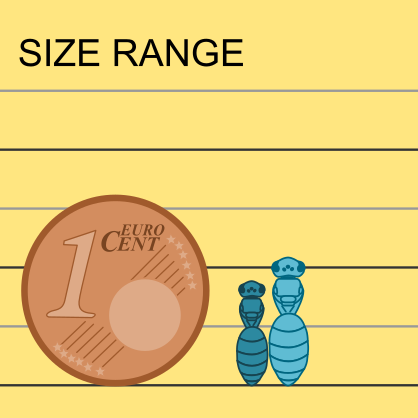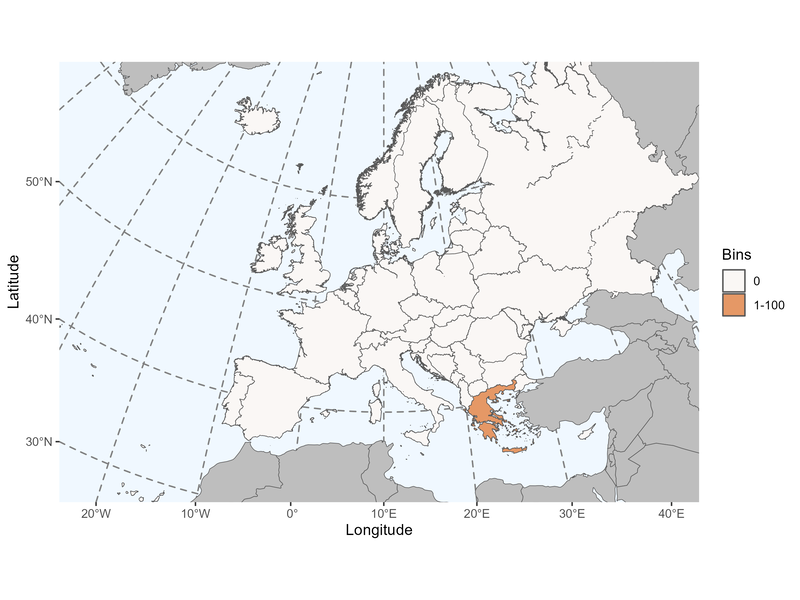Author: Popov, 1947
|
Type species: Dioxys formosa Morawitz, 1875, by original designation.
|
Clade: Anthophila
Family: Megachilidae SubF: Megachilinae Tribe: Dioxyini |
|
Distinctive traits
|
Pictures of distinctive traits.
(Sorry, there is no picture available at this time. If you have some and would like to become a contributor to IDmyBee, please contact us.) |
Morphologically close genera, and how to distinguish them:
Aglaoapis species have a strong median spine on their metanotum. Anterior surface of the front coxa is punctate, with a tubercle at the top.
Dioxys & Paradioxys species have no transverse carina on the labrum.
Ensliniana species have a rounded scutellum.
Stelis species have the second recurrent vein reaching at or beyond (apically) to the second submarginal cell.
Coelioxys species have 2 tooth-like axillae and a rounded scutellum. Tip of the abdomen pointed in females.
- Metadioxys - Aglaoapis
Aglaoapis species have a strong median spine on their metanotum. Anterior surface of the front coxa is punctate, with a tubercle at the top.
- Metadioxys - Dioxys & Paradioxys
Dioxys & Paradioxys species have no transverse carina on the labrum.
- Metadioxys - Ensliniana
Ensliniana species have a rounded scutellum.
- Metadioxys - Stelis
Stelis species have the second recurrent vein reaching at or beyond (apically) to the second submarginal cell.
- Metadioxys - Coelioxys
Coelioxys species have 2 tooth-like axillae and a rounded scutellum. Tip of the abdomen pointed in females.
General comments on Metadioxys species identification
There is only one species of Metadioxys recorded in Europe.
There is only one species of Metadioxys recorded in Europe.
Metadioxys species found in Europe (Ghisbain et al. 2023):
Metadioxys graecus (Mocsáry, 1877)
Metadioxys graecus (Mocsáry, 1877)
Page contributors:
You noticed a mistake? You have a suggestion to improve this page?
Don't keep it to yourself, please contact us and become a contributor to IDmyBee!
- Adrien Perrard (Dec. 2023)
- Adrien Perrard (Dec. 2019)
You noticed a mistake? You have a suggestion to improve this page?
Don't keep it to yourself, please contact us and become a contributor to IDmyBee!
References used to write this page:
- Ghisbain, G., Rosa, P., Bogusch, P., Flaminio, S., Le Divelec, R., Dorchin, A., Kasparek, M., Kuhlmann, M., Litman, J., Mignot, M., Müller, A., Praz, C., Radchenko, V.G., Rasmont, P., Risch, S., Roberts, S.P.M., Smit, J., Wood, T.J., Michez, D. & Reverte, S. (2023). The new annotated checklist of the wild bees of Europe (Hymenoptera: Anthophila). Zootaxa, 5327(1), 1-147.
- Michener, C.D. 2007. The Bees of the World, 2nd Edition. The John Hopkins University Press, Baltimore.
- Michez D., Rasmont P., Terzo, M., Vereecken, N. 2019. Abeilles d'Europes. Hymenoptères d'Europes, Volume 1. N.A.P. Editions.
- Nieto, A., Roberts, S. P., Kemp, J., Rasmont, P., Kuhlmann, M., García Criado, M., ... & Michez, D. 2014. European red list of bees. Luxembourg: Publication Office of the European Union, 98.
- Rasmont, P., Devalez, Jelle, Pauly, A., Michez, D. & Radchenko, V.G. 2017. Addition to the checklist of IUCN European wild bees (Hymenoptera: Apoidea). Annales de la Société entomologique de France 53: 17-32.



